The Enermax LiqMaxFlo 360mm AIO Cooler Review: A Bit Bigger, A Bit Better
by E. Fylladitakis on February 14, 2024 8:00 AM EST- Posted in
- Cases/Cooling/PSUs
- Water Cooling
- Enermax
- Liquid Cooling
- RGB
- ARGB
Testing Results, Maximum Fan Speed
Our maximum speed testing is performed with both the fans and the pump of the kit powered via a 12V DC source. This input voltage should have the pump and fans matching the speed ratings of the manufacturer. According to the company’s specifications, the included Enermax fans should have a rotational speed of 1800 RPM. Our tachometer indicated that the fans were rotating at an average speed of 1770 RPM, close to the rated specifications and consistent to each other. The divergence is due to the high airflow resistance of the radiator.
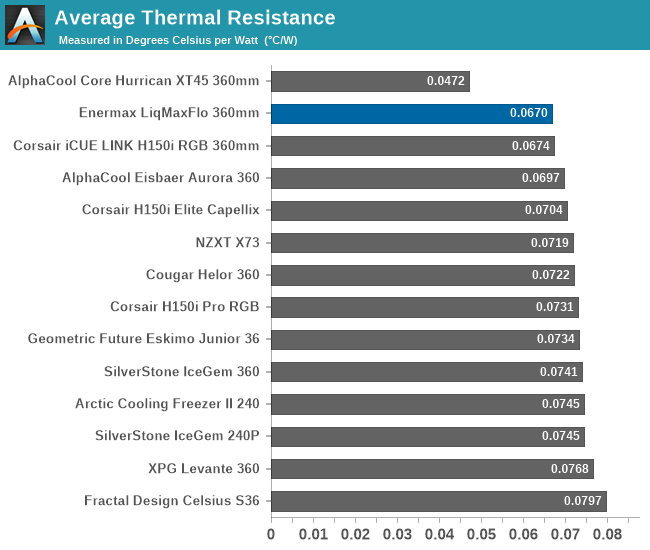
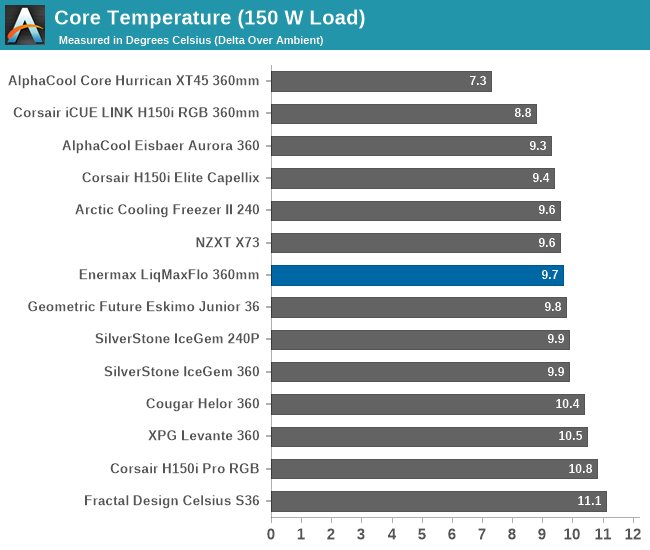
| Core Temperature, Constant Thermal Load (Max Fan Speed) |
The Enermax LiqMaxFlo 360mm cooler exhibits notable performance across different load conditions, achieving an average thermal resistance of 0.067 °C/W at its maximum fan speed of 1770 RPM. The thermal performance of the cooler is relatively consistent regardless of the load. This performance is particularly impressive considering the cooler's fan speed is fairly low compared to competitive products.
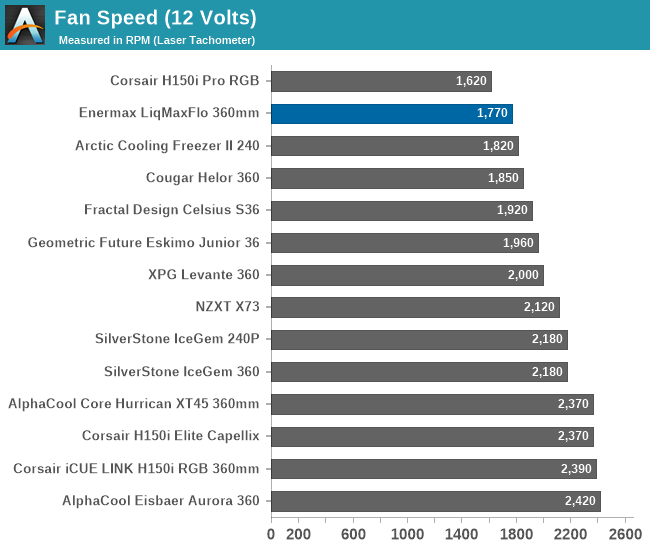
The Enermax LiqMaxFlo 360mm cooler, with a sound pressure level (SPL) of 38.6 dB(A) at full fan speed, stands out with its relatively low noise output for a cooler equipped with three 120mm fans. While this is still loud enough to be audibly noticeable, it's some of the best results we've seen for a 360mm cooler. This achievement is particularly noteworthy given the inclusion of an additional fourth 60mm fan on the CPU block, which does contribute to higher noise levels. Despite the potential for increased sound from the extra fan, the LiqMaxFlo maintains a noise level that is quite moderate.
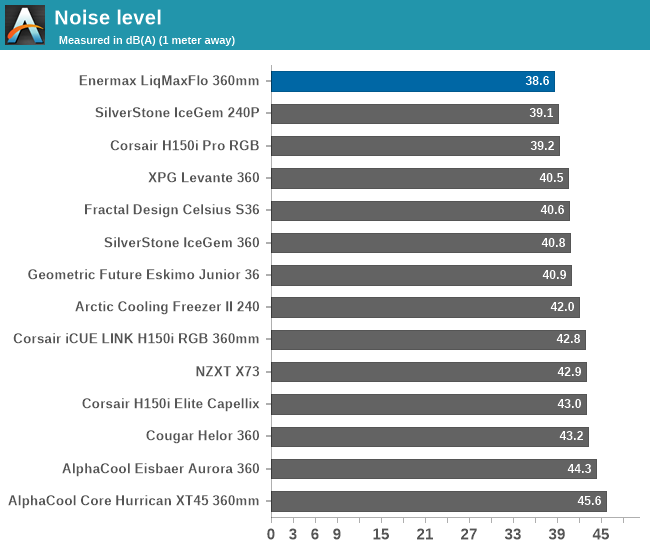
Testing Results, Low Fan Speed
Using a PWM voltage regulator, we reduced the speed of the fans manually down to half their rated speed. At this setting, the 120 mm UCSFARGB120P-LMF fans of the LiqMaxFlo rotate at 850 RPM. Note that the speed of the 60 mm fan is also halved, yet this does not affect the results of our thermal testing.
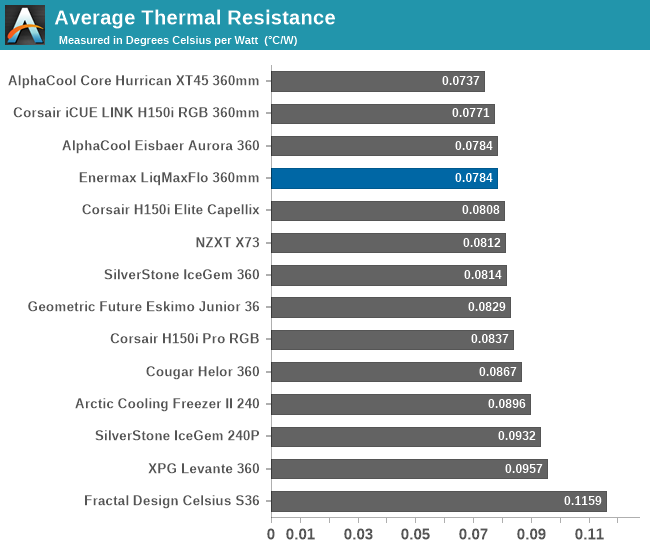

| Core Temperature, Constant Thermal Load (Low Fan Speed) |
The Enermax LiqMaxFlo 360 mm cooler displays excellent cooling efficiency with its fans running at 850 RPM, resulting to an average thermal resistance of 0.0784 °C/W. This figure brings it near the top of our charts, reaching figures that compete even with much more expensive and complex open loop liquid cooling kits.
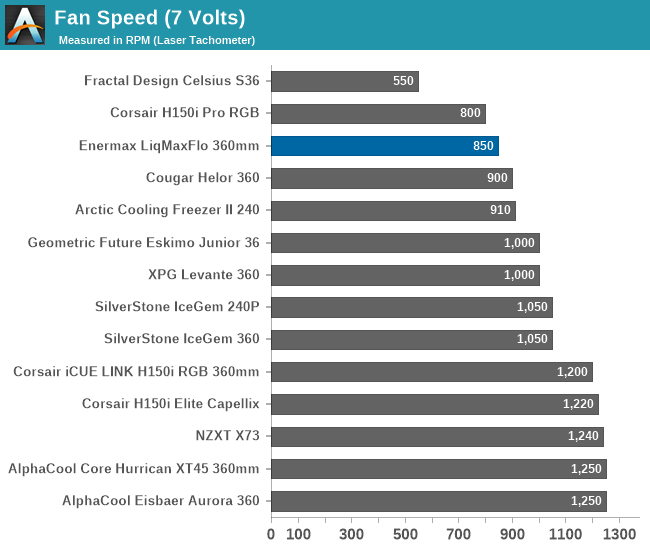
The acoustic performance of the Enermax LiqMaxFlo 360mm cooler is commendable, particularly when its fans are operating at half speed. At this reduced speed of 850 RPM, the cooler maintains a relatively low noise level of 33.4 dB(A), positioning it as one of the quietest cooling solutions that utilize three cooling fans.
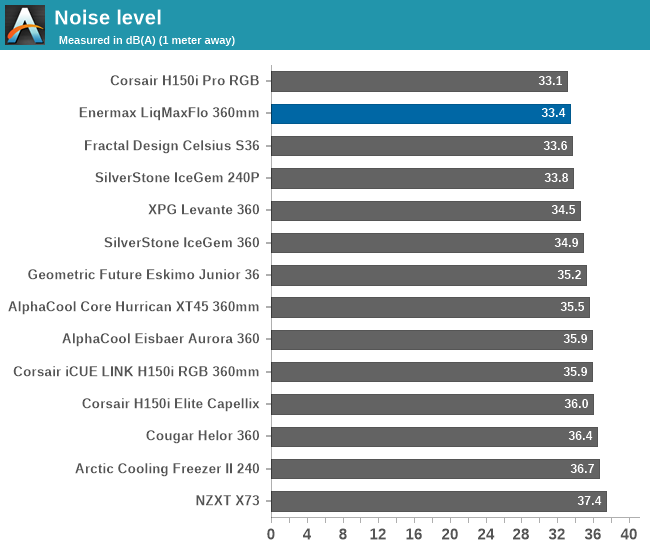
Thermal Resistance VS Sound Pressure Level
During our thermal resistance vs. sound pressure level test, we maintain a steady 100W thermal load and assess the overall performance of the coolers by taking multiple temperature and sound pressure level readings within the operating range of the stock cooling fans. The result is a graph that depicts the absolute thermal resistance of the cooler in comparison to the noise generated. For both the sound pressure level and absolute thermal resistance readings, lower figures are better.
This chart provides insightful revelations about the Enermax LiqMaxFlo 360mm cooler's capabilities. It demonstrates that the LiqMaxFlo can deliver thermal performance comparable to its similarly sized competitors, but with notably less noise. The impressive results are not attributed to any extraordinary innovation; rather, they are the product of a thoughtfully designed thick radiator combined with optimally sized fans. This strategic design significantly enhances the cooler's thermal efficiency. The only instance where the LiqMaxFlo is surpassed is by a considerably more costly and larger open-loop liquid cooling system.


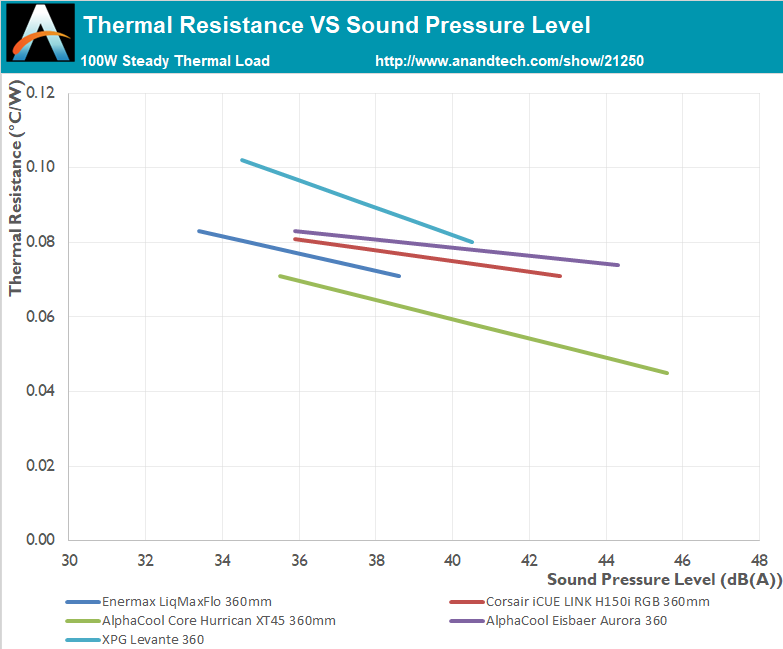








12 Comments
View All Comments
meacupla - Wednesday, February 14, 2024 - link
Does the 60mm fan on the CPU block change speed at all? Is it tied to the pump speed, is it fixed, or does it have its own power connector?incx - Wednesday, February 14, 2024 - link
After the bs they pulled with Liqtech TR4 coolers (see GamersNexus etc for coverage) I wouldn't trust that company with my dirty socks. Had two of them fail in a row each within a year, after which I switched back to air with a Noctua and blacklisted Enermax for life.ballsystemlord - Wednesday, February 14, 2024 - link
Their story is rather sad considering how good they are at making fans.MartenKL - Thursday, February 15, 2024 - link
Strange that the Arctic Liquid Freezer II is represented by the 240 model and not the comparable 360-model.PeachNCream - Thursday, February 15, 2024 - link
Anandtech - The internet's number one site for reviews of manufacturers' desktop PC coolers and the occasional USB storage solution!back2future - Thursday, February 15, 2024 - link
[ Yes, and there's more interest in AMD Zen 6, 2.5d Interconnects, ~3-2nm(?), also'https://www.anandtech.com/show/21242/amd-ryzen-7-8... ' ]
SanX - Friday, February 16, 2024 - link
Why waste more and more energy for nothing? Now almost a kW, soon will be two. Let they heat water in the tank.PeachNCream - Saturday, February 17, 2024 - link
I don't think home computers will ever require 2kW. Most household electrical wiring would not support that sort of demand which is fortunate since gaming PCs are already wastefully stupid enough.SanX - Sunday, February 18, 2024 - link
Most homes have laundry and air conditioners and that's 240V. Now you can put your PC into attic or basement, fiber optic HDMI at 8k costs almost nothingPeachNCream - Sunday, February 18, 2024 - link
While there might be a very limited number of people willing to run a dedicated 240V line somewhere and then run fiber to another location in their home, that won't do much for people that live in apartments or rental properties. Also attics tend to be quite hot in the summer so a PC located there will likely require additional cooling if the attic doesn't already have it. There is not a sufficiently large potential market with the vast majority of computing shifting to phones or other portable hardware already reducing the appeal of mainstream desktops let alone a hypothetical 2kW system that is, to be quite frank, just a games machine.